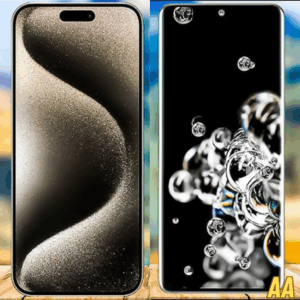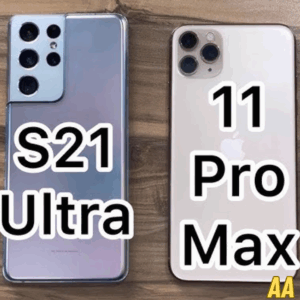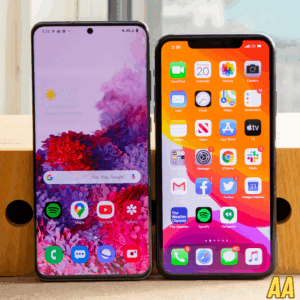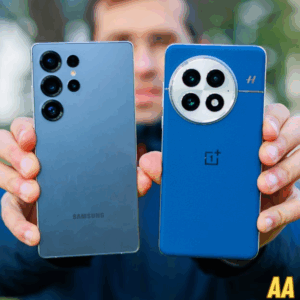iPad Air 7 M3 (2025) vs. iPhone 16 Pro Max: An In-Depth Comparison
Apple’s 2025 lineup showcases the best of its innovation with the iPad Air 7 M3 and the iPhone 16 Pro Max. Both devices represent the pinnacle of their respective categories—tablet and smartphone—but cater to different user needs. With Apple’s focus on performance, design, and ecosystem integration, choosing between these two can be challenging. This article explores every facet of these devices to help you decide which is right for you.
1. Design and Build Quality
iPad Air 7 M3
The iPad Air 7 continues Apple’s tradition of elegant, minimalist design. The device features an all-aluminum chassis with flat edges, reminiscent of the iPad Pro lineup. Weighing around 460 grams and measuring just 6.1mm thick, it’s remarkably portable for a 11-inch tablet. Available in a range of colors—Space Gray, Starlight, Blue, and Pink—the Air 7 is both professional and playful.
iPhone 16 Pro Max
The iPhone 16 Pro Max refines the design language of its predecessor with a titanium frame, making it lighter yet more robust. The device has a slightly larger 6.9-inch display, but its thin bezels and curved edges make it comfortable to hold. The back is protected by Ceramic Shield glass, and the device is IP68 rated for water and dust resistance. Available in classic colors—Graphite, Silver, Gold, and the new Deep Blue—the 16 Pro Max exudes luxury.
Verdict
iPad Air 7: Larger, lighter for its size, versatile for productivity and creativity.
iPhone 16 Pro Max: Premium materials, more compact, easier for one-handed use.
2. Display Technology

iPad Air 7 M3
The iPad Air 7 boasts an 11-inch Liquid Retina display with a resolution of 2360 x 1640 pixels. It supports True Tone, P3 wide color, and up to 600 nits brightness, making it ideal for content consumption and creation. The 120Hz ProMotion refresh rate, previously exclusive to the Pro models, has finally arrived on the Air, offering buttery-smooth scrolling and responsiveness.
iPhone 16 Pro Max
The 16 Pro Max features a 6.9-inch Super Retina XDR OLED display with a resolution of 2796 x 1290 pixels. With up to 2000 nits peak outdoor brightness and 120Hz ProMotion, the display is stunningly vibrant and sharp. HDR10 and Dolby Vision support make it a powerhouse for media consumption.
Verdict
iPad Air 7: Larger canvas, great for multitasking, drawing, and watching movies.
iPhone 16 Pro Max: Sharper pixel density, brighter, better for outdoor use.
3. Performance and Hardware
iPad Air 7 M3
The headline feature of the iPad Air 7 is the new Apple M3 chip, a leap forward in tablet performance. Built on a 3nm process, the M3 offers an 8-core CPU and 10-core GPU, delivering desktop-class performance. This makes the Air 7 not only suitable for everyday tasks but also for demanding workflows like 4K video editing, 3D modeling, and gaming.
With up to 16GB RAM and storage options up to 1TB, the Air 7 is a multitasking beast. It supports the latest Wi-Fi 6E and optional 5G cellular connectivity.
iPhone 16 Pro Max
The iPhone 16 Pro Max is powered by the A18 Pro chip, also built on a 3nm process. While not as powerful as the M3, the A18 Pro is optimized for mobile efficiency, balancing performance and battery life. It features a 6-core CPU and 6-core GPU, with a dedicated Neural Engine for AI tasks.
RAM is capped at 12GB, with storage options up to 1TB. The device supports Wi-Fi 7 and 5G for blazing-fast connectivity.
Benchmark Comparison
M3 (iPad Air 7): Outperforms the A18 Pro in multicore and GPU-intensive tasks.
A18 Pro (iPhone 16 Pro Max): Superior in single-core tasks and power efficiency.
Verdict
iPad Air 7: Best for heavy multitasking, creative workflows, and gaming.
iPhone 16 Pro Max: Optimized for mobile tasks, AI, and power efficiency.
4. Camera Capabilities
iPad Air 7 M3
The iPad Air 7 features a single 12MP rear camera with Smart HDR 5, capable of 4K video recording at 60fps. The front camera is now landscape-oriented, a 12MP Ultra Wide lens with Center Stage for better video calls.
While the Air 7’s cameras are excellent for scanning documents, video calls, and casual photography, they can’t compete with the flagship iPhone.
iPhone 16 Pro Max
The iPhone 16 Pro Max boasts a triple-camera setup:
Main: 48MP wide lens with sensor-shift OIS
Ultra Wide: 12MP with macro capabilities
Telephoto: 12MP with 5x optical zoom
The device supports ProRAW and ProRes video, Night mode, Deep Fusion, and advanced computational photography. The 16 Pro Max is a favorite among mobile photographers and videographers.
Verdict
iPad Air 7: Functional cameras, great for productivity.
iPhone 16 Pro Max: Industry-leading mobile photography and videography.
5. Battery Life and Charging

iPad Air 7 M3
The iPad Air 7 offers up to 10 hours of web browsing or video playback on Wi-Fi, slightly less on cellular. Its large battery ensures all-day use for most users. Charging is via USB-C, supporting 30W fast charging.
iPhone 16 Pro Max
The 16 Pro Max offers up to 29 hours of video playback, thanks to its power-efficient chip and optimized battery. It supports 35W wired charging, MagSafe wireless charging, and reverse wireless charging for accessories.
Verdict
iPad Air 7: Excellent for all-day productivity.
iPhone 16 Pro Max: Longer battery life relative to device size, more versatile charging options.
6. Software and Ecosystem
iPad Air 7 M3
Running iPadOS 18, the Air 7 leverages the power of the M3 chip with features like Stage Manager, full external display support, and advanced multitasking. The Apple Pencil 3 and Magic Keyboard compatibility turn the Air 7 into a true laptop replacement for many users.
iPhone 16 Pro Max
Running iOS 18, the iPhone 16 Pro Max introduces new AI-driven features, improved widgets, and deeper ecosystem integration. The device is the hub for Apple’s connected experience—Apple Watch, AirPods, HomeKit, and more.
Ecosystem Integration
Both devices support seamless handoff, AirDrop, Universal Clipboard, and iCloud integration. However, the iPhone’s Always-On connectivity and superior camera make it the central device for most users.
Verdict
iPad Air 7: Superior for productivity, multitasking, and creative apps.
iPhone 16 Pro Max: Best for communication, portability, and ecosystem centrality.
7. Accessories and Expandability
iPad Air 7 M3
Apple Pencil 3: Magnetic charging, hover support, and new gesture controls.
Magic Keyboard: Turns the Air into a laptop-like device.
USB-C Hub Support: Connect external drives, displays, and peripherals.
iPhone 16 Pro Max
MagSafe Accessories: Wallets, battery packs, cases.
Apple Watch Integration: Health, fitness, and security.
CarPlay/Spatial Audio: Enhanced media and navigation.
Verdict
iPad Air 7: More versatile for productivity and creative work.
iPhone 16 Pro Max: Richer in mobile and wearable accessories.
8. Price and Value
iPad Air 7 M3
Starting Price: $699 (Wi-Fi, 128GB)
Top Model: $1,299 (Cellular, 1TB)
Accessories: Apple Pencil 3 ($129), Magic Keyboard ($299)
iPhone 16 Pro Max
Starting Price: $1,199 (256GB)
Top Model: $1,699 (1TB)
Accessories: MagSafe Battery ($99), Leather Case ($59)
Value Proposition
iPad Air 7: More affordable for the power, especially for students and professionals.
iPhone 16 Pro Max: Higher price, but unmatched as a premium smartphone.
9. Use Cases and Target Audience
iPad Air 7 M3
Students: Note-taking, research, multimedia learning.
Professionals: Presentations, document editing, remote work.
Artists/Creators: Drawing, video editing, music production.
Media Consumers: Movies, games, reading.
iPhone 16 Pro Max
Power Users: Heavy multitaskers, mobile gamers.
Photographers/Videographers: Pro camera system, editing on-the-go.
Travelers: GPS, mobile payments, connectivity.
Everyday Users: Communication, social media, productivity.
10. Pros and Cons
iPad Air 7 M3
Pros:
Larger, immersive display
M3 chip for desktop-class performance
Versatile accessory support
Great value for power
Cons:
Less portable than a phone
Cameras not as advanced
Not a true cellular phone
iPhone 16 Pro Max
Pros:
Best-in-class cameras
Compact, always connected
Premium build and display
Central to Apple ecosystem
Cons:
Expensive
Smaller screen for productivity
Less suited for creative workflows
Which Should You Choose?
Choose the iPad Air 7 M3 if:
You need a device for productivity, creativity, or learning.
You want a larger screen for multitasking and media.
You value desktop-class performance in a portable package.
Choose the iPhone 16 Pro Max if:
You want the best smartphone experience.
You prioritize photography, connectivity, and portability.
You need a device that’s always with you and central to your digital life.
Both devices are technological marvels, but they serve different purposes. The iPad Air 7 M3 is the ultimate productivity and creativity tool, while the iPhone 16 Pro Max is the best all-around smartphone for power users. Your choice should depend on your specific needs and how you plan to use the device.









Trackbacks and Pingbacks